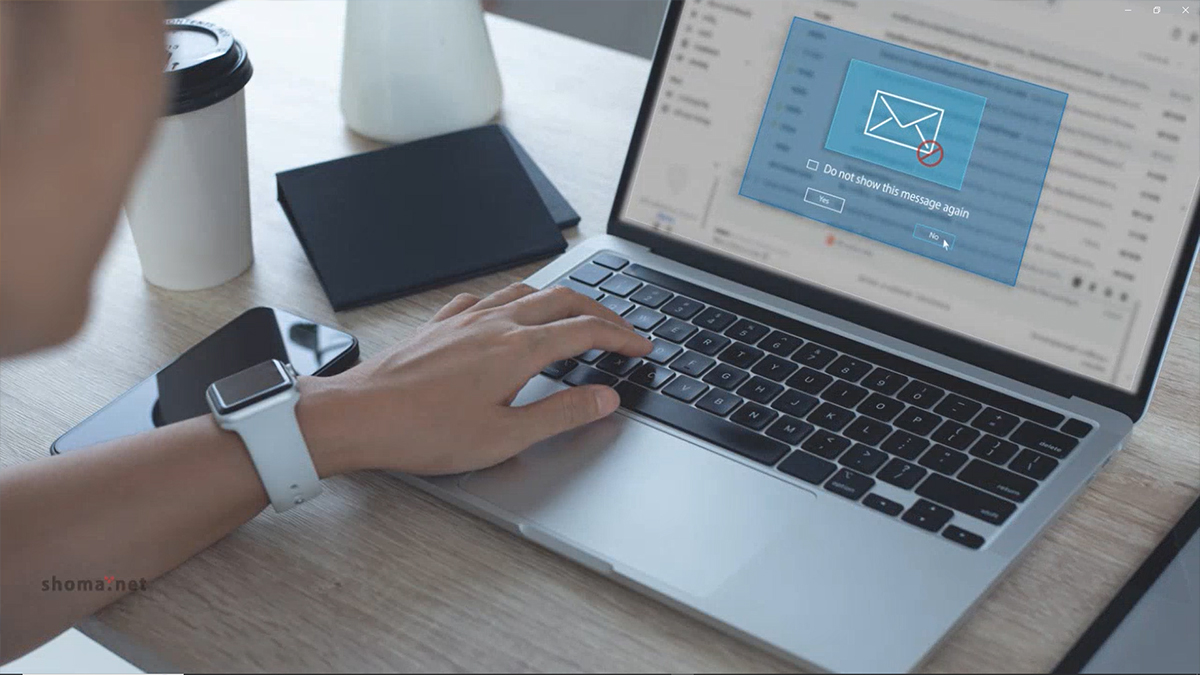The main difference lies in how they manage your emails. POP3 downloads emails from the server to your device and typically deletes them from the server, whereas IMAP keeps emails on the server, allowing access from multiple devices. POP3 is better for local storage and offline access, while IMAP is ideal for accessing emails from various locations and devices.
![]()
Shoma.net IT Solution is an ultra-premium, responsive IT company in Dubai-UAE.
[email protected]
Al Saqar Business Tower - No 3500 - Sheikh Zayed Rd - Trade Centre - DIFC - Dubai
CALL US NOW FOR MORE DETAILS
POP3 vs. IMAP: Understanding Email Protocols for Better Business Email & Web Hosting Management
In today's digital age, professional communication is key to business success. While many people rely on free email services like Hotmail or Gmail, these aren't always ideal for business use. Here’s why understanding email protocols like POP3 and IMAP is essential for effective email management in your business.

Professionalism and Branding
Using your domain name for your email address (e.g., [email protected]) looks far more professional than a generic email address. It reinforces your brand with every email you send.
Reliability and Performance
Email hosting services are designed to handle the demands of business communication. They offer better performance, reliability, and support compared to free email services. This means fewer disruptions and smoother operations.
Enhanced Security
Email hosting providers offer advanced security features, including spam filtering, virus protection, and encryption. This is crucial for protecting sensitive business information and maintaining client trust.
Understanding Email Protocols: POP3 vs. IMAP
Email hosting and caring for your email is important. There are two main types of email protocols on the internet:
Understanding the differences between these protocols is crucial to avoid common technical issues and ensure efficient email management.
POP3 Email Accounts
POP3 (Post Office Protocol 3) downloads emails from the server to your device and typically deletes them from the server after download. However, you have the option to set a certain time period, from 10 days to 60 days, to keep emails on the server and automatically delete those older than that time range. This can save server space and allow you to manage emails locally using a program like MS Outlook. It's ideal for users who primarily access their email from one device and need to ensure daily backups and secure settings.
IMAP Email Accounts
IMAP (Internet Message Access Protocol) keeps emails on the server and allows access from multiple devices. While this is convenient for accessing emails on the go from mobile devices or tablets, it can lead to emails piling up on the server, consuming significant disk space. IMAP is suitable for users who need to access their emails from various locations but requires careful management to avoid server overload. Additionally, proper settings for deleting unwanted emails and old emails, which have been downloaded to your computer with the POP3 protocol settings mentioned above, are crucial to maintaining server efficiency.
Understanding the Differences and Benefits of Free vs. Branded Email Services
Many people who have used free email services like Hotmail, Gmail, and Yahoo do not understand the differences between free emails (typically using IMAP) and hosted domain name emails (often using POP3). They assume the functionality will be the same and that everything will be managed automatically.
Attachment Handling
With free email services, you can send or receive large attachments (e.g., 15MB) without significant delays since the emails are stored online, and you can download heavy attachments as needed. However, with a POP3 email account, professionals who receive 20 to 50 work-related emails daily may not want to wait for a long time to download numerous emails with large attachments. Therefore, it's important to understand how to use your email efficiently and what the best methods are for sharing large files over the internet, such as using file-sharing services like Google Drive, OneDrive, or Dropbox.
Email Delivery and Spam Control
Another issue is email delivery. In free email services, any email sent to an [email protected] is delivered immediately, leading to a higher chance of receiving spam. However, branded email services often use greylisting, a technique used by professional email providers to avoid unwanted emails and spam. Greylisting stops 'try-once-and-never-again' tactics that spammers use. Initially, the mail is refused, but after a certain amount of time retrying (ours is set to 10 minutes), the mail will be accepted.
Understanding the differences between using free email and branded email is crucial. Your expectations should align with the protocols and communication trends of today to ensure smooth and efficient communication.
Cost-Effectiveness of Proper Email Management
To avoid high costs, it’s essential to choose the correct email protocol. Setting up a POP3 email account on your computer can help you download and manage emails locally, reducing the need for extensive server storage. However, IMAP accounts should be used with caution, primarily for mobile access, and require regular server management to prevent storage issues.
Additionally, using services like Google Suite or Microsoft for domain name and email hosting comes at a cost of $6 to $8 per email account per month. For a small company with five email accounts, this can amount to $30 per month for email hosting alone, plus additional costs for website hosting.
Storage and Backup Solutions
Hosting providers usually allocate limited disk space for each domain name, combining website and email hosting. Additional disk space incurs extra charges. Therefore, managing email storage effectively is crucial to avoid additional costs and ensure smooth operations.
Support and Maintenance
Professional email hosting includes dedicated support and maintenance. If any issues arise, you have access to expert assistance to resolve problems quickly, minimizing downtime and disruptions.
Conclusion
Understanding the technical differences between POP3 and IMAP email protocols is vital for effective email management. By choosing the right email protocol and managing your email hosting properly, you can ensure that your business communication is efficient, secure, and aligned with your needs.
FAQs
Branded emails (e.g., [email protected]) enhance professionalism and reinforce your brand. They also offer better reliability, performance, security, and support compared to free email services. Free email services may be convenient, but they often come with limitations in terms of features and support.
To manage large attachments efficiently with a POP3 email account, consider using file-sharing services like Google Drive, OneDrive, or Dropbox. These services allow you to share large files without clogging your email server and ensure faster email downloads.
Yes, it is possible to set up both POP3 and IMAP for the same email account, but it's not recommended as it can lead to synchronization issues. It is better to choose one protocol based on your needs: POP3 for local storage and offline access, or IMAP for accessing emails from multiple devices.
Branded email services like Google Suite or Microsoft 365 typically charge $6 to $8 per email account per month. For a small company with several email accounts, this can add up, in addition to costs for website hosting. Understanding these costs can help you choose the most cost-effective solution for your business.
o manage email storage with IMAP, regularly delete unwanted emails and move important emails to local folders on your device. Use email client settings to archive old emails and manage storage quotas. Additionally, clean up your mailbox periodically to prevent it from reaching its storage limit.
To ensure your emails are backed up when using a POP3 email account, regularly back up your email client (e.g., MS Outlook). Many email clients offer built-in backup options, or you can use third-party backup software. Setting the POP3 account to keep emails on the server for a certain period (e.g., 10 to 60 days) before deletion can also provide an additional safety net.



